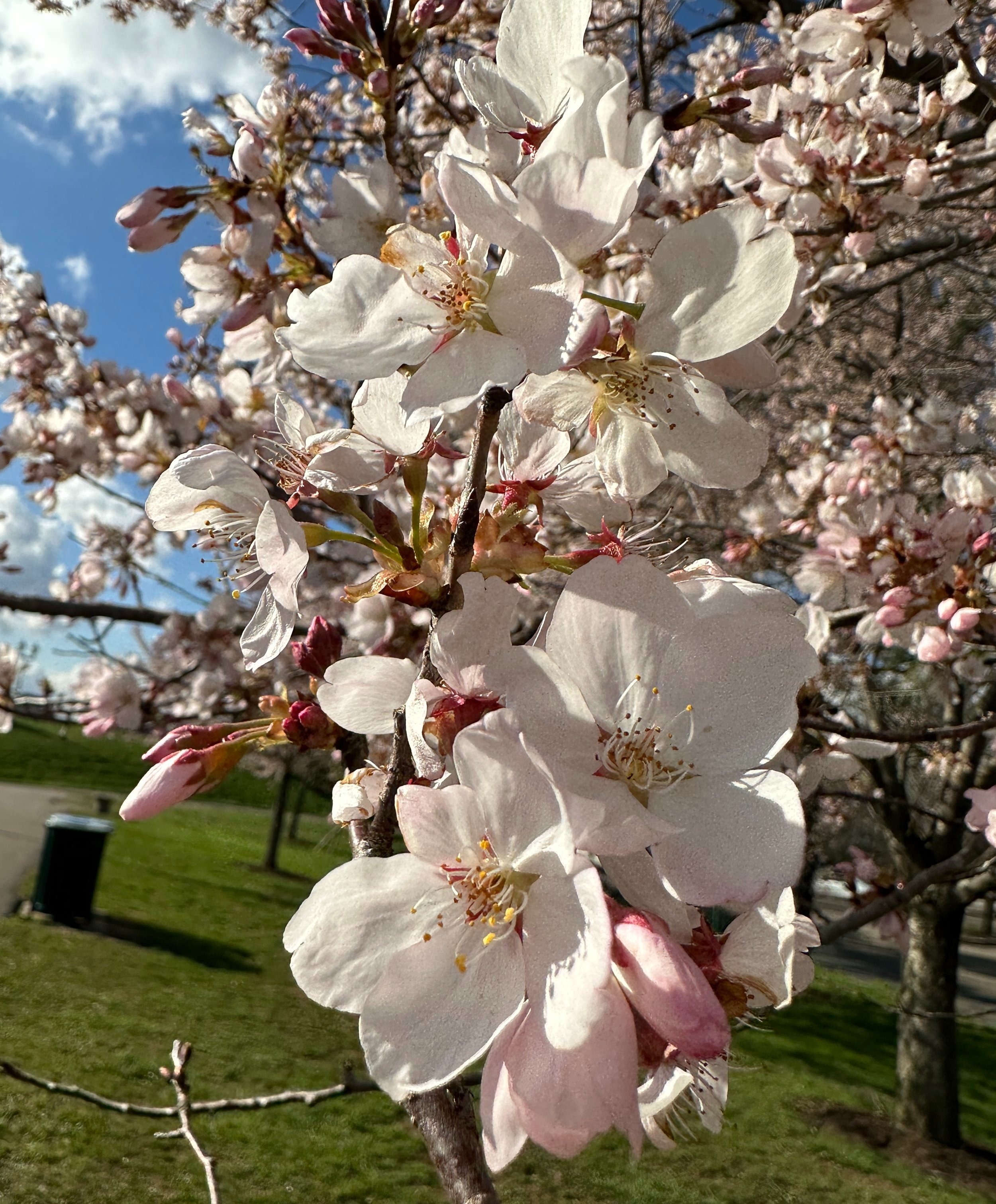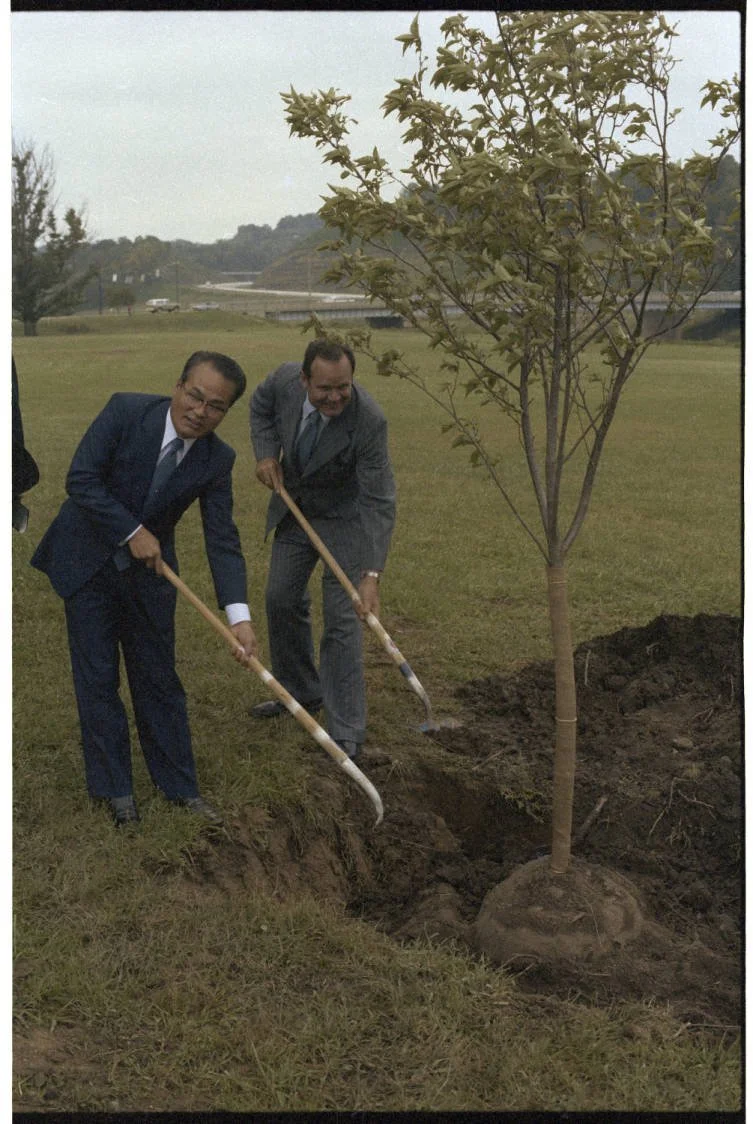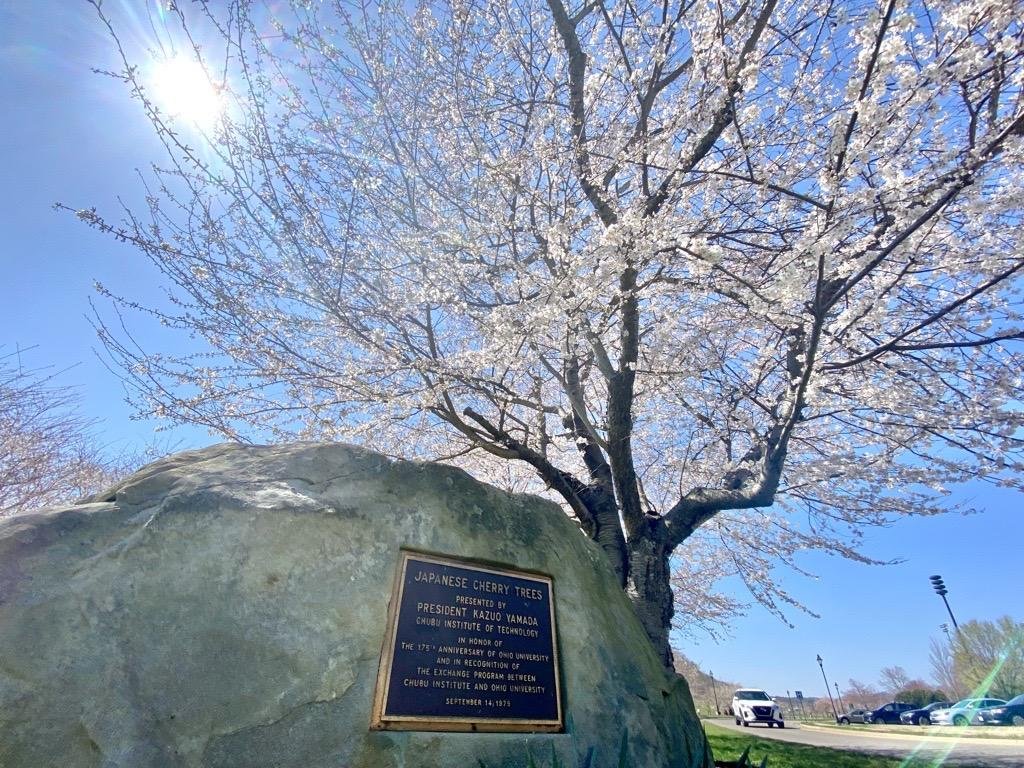RETRO REPORT: The fleeting beauty of Ohio U’s cherry blossoms
Editor’s Note: This story was originally published in TNPs spring print.
Ohio University is known for many things—its journalism school, its party scene, the quaint town it resides in—but time and time again the campus itself is what captures people’s attention. The university’s main campus sits on five greens: College Green, North Green, South Green, East Green and West Green. The south and west sides of campus are bordered by the Hocking River, which flows across a 102-mile stretch from Fairfield County until it connects to the Ohio River at Hockingport. The Hockhocking Bike Path runs next to the river, where Ohio U students and Athens residents alike find ways to stay active and take in the surrounding nature. It is here where you can find Athens’ cherry blossoms.
Photo by Claire Del Vita.
Known as Sakura trees in Japan, the blooming of the pink and white blossoms around the world mark the beginning of spring and are a sign of new life. Although the flowers last usually no more than two weeks, cherry blossoms hold strong meaning in Japanese culture and history, according to the Smithsonian Institution. The blooming of Sakura signifies the start of Japan’s fiscal and school year, as the trees are thought to bring new beginnings. In America, this period of time falls at the end of the school year and commencement, which also indicates a new beginning for many high school and college seniors. The fleetingness of the flowers’ blooming symbolizes the “ephemeral beauty of living” to the Japanese, according to the Library of Congress, and is one of the reasons people appreciate them so much.
“I think traditionally Japanese people found some sort of connection with that. It’s beautiful, but it’s a reminder that our life is not forever,” Hiroyuki Oshita, an associate professor of Japanese and linguistics at Ohio U, said.
Traditionally, the blooming of the trees is marked by festivals and celebrations where participants drink sake and picnic under the trees. The Smithsonian notes that this practice in Japan is called hanami, literally meaning “watching blossoms.” Sakura trees first came to America in 1912, when the people of Japan sent 3,020 trees from Yokohama to Washington D.C., according to the Smithsonian. Hanami came to America as well, in the form of the Cherry Blossom Festival, which had its 103rd anniversary this year.
It was not until 1979 that Sakura trees arrived in Athens. Chubu University, known as Chubu Institute of Technology at the time, gifted the university the trees in honor of its 175th anniversary, according to Ohio U’s Office of Global Affairs. Ohio U’s President Charles J. Ping and Chubu University’s President Kazuo Yamada had built a personal friendship while the universities had built a global partnership. The two presidents even planted the first of 175 cherry blossom trees together, a symbol of the two universities coming together.
Ohio U President Charles J. Ping and Chubu University President Kazuo Yamada plant the first of 175 Sakura trees. Photo from Ohio U Libraries Digital Archives.
“They were close friends. They respected each other and they saw each other as more than just business counterparts,” Oshita said.
Ohio U first began its partnership with Chubu U in 1973. President Dr. Claude Sowle signed a formal agreement with Chubu President Dr. Kohei Miura that created the Miura Visiting Professors program, where the two universities would exchange professors to teach at their respective universities, according to a timeline by Ohio U’s Office of Global Affairs. Twenty years later, Ohio U sent a replica of Cutler Hall’s cupola to Chubu to celebrate the agreement with the university. Chubu would also donate the Yamada House to Ohio U in honor of Ping’s friend and colleague.
Hiroshi Katsumori taught at Ohio in 1982 through the Miura Visiting Professors Program. Photo from Ohio U Libraries Digital Archives.
On Ohio U’s bicentennial in 2004, Chubu donated more Sakura trees to replace those that had been damaged as well as bring the number of trees up to 200, according to Ohio U’s Office of Global Affairs. This same year, Oshita, who is also the director of the Japanese program at the university, organized Ohio U’s very own Cherry Blossom Festival. At the time, the Japanese language program was bigger than it is today and there were more international students. Oshita and the students worked together to organize the festival: planning activities, making food and even finding traditional Japanese dancers, some of whom came from Japan.
Ohio U’s Cherry Blossom Festival would go on for around 15 more years and had turnouts so large the celebration moved from Walter Hall into Baker University Center, Oshita said. As there were fewer and fewer international students from Japan and students taking Japanese, the festival became less feasible. Today, the Ohio Program of Intensive English’s (OPIE) Global Buddies Program has brought students from Chubu U back to Ohio U’s campus. OPIE organized a smaller-scale Cherry Blossom Festival last spring, for Chubu students, their buddies and other Ohio U students to celebrate the blooming of the Sakura trees once more.
The commemorative sign for the cherry blossoms. Photo from the Ohio U’s Office of Global Affairs.
Although there is less of a formal celebration for Ohio U’s cherry blossoms now, there are still flocks of people who walk along the bike path to take in the flowering trees before the petals fall. For Oshita, just seeing people enjoy the beautiful scenery is enough celebration for him.
“It gives a sense of serenity rather than excitement, so I like that. But the thing I really like about this season when I walk along Hocking River is when I see people sitting or walking or gathering around the trees, enjoying that very peaceful time,” Oshita said.
He went on to note that the trees bring people from all walks of life together to take in the beauty of the Sakura and the joy he sees on everyone’s faces as they spend time together. Oshita encouraged people to cherish those moments because just like the blossoms, life is fleeting.




